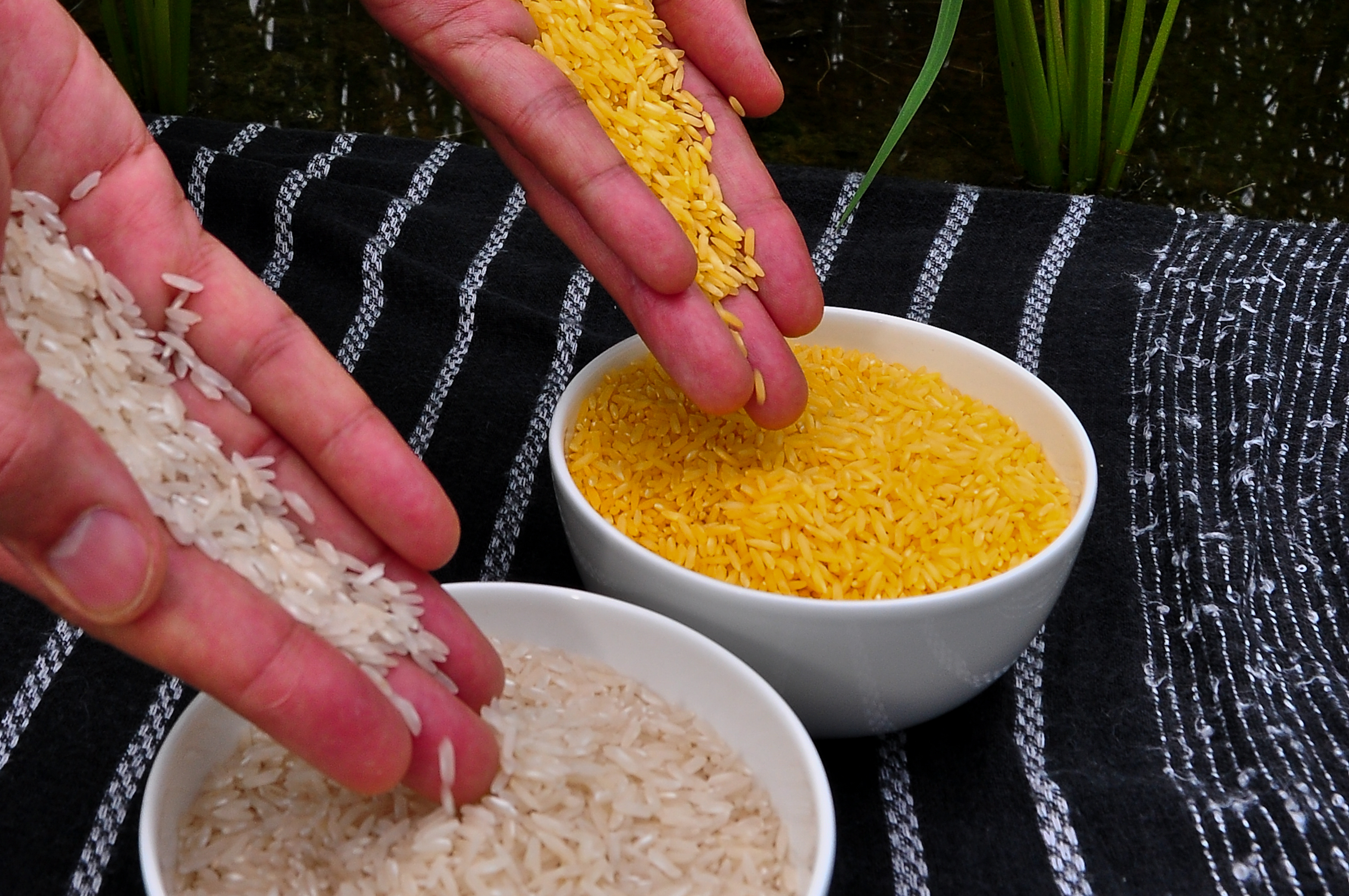
WTF Happened to Golden Rice?
Like the hover boards of the Back to the Future franchise, golden rice is an old idea that looms just beyond the grasp of reality.
"This Rice Could Save a Million Kids a Year," announced a Time magazine cover back in 2000. Orange in color, the rice is genetically modified to contain a jolt of beta-carotene, the stuff that gives carrots their hue and that our bodies transform into vitamin A. Diets deficient in that key micronutrient are the leading cause of blindness of children in the global south, where rice tends to be a staple grain. A decade and a half since the Time article, golden rice has yet to be planted commercially—but it continues generating bumper crops of hype.
February 3, 2016 | Source: Mother Jones | by Tom Philpott
Like the hover boards of the Back to the Future franchise, golden rice is an old idea that looms just beyond the grasp of reality.
“This Rice Could Save a Million Kids a Year,” announced a Time magazine cover back in 2000. Orange in color, the rice is genetically modified to contain a jolt of beta-carotene, the stuff that gives carrots their hue and that our bodies transform into vitamin A. Diets deficient in that key micronutrient are the leading cause of blindness of children in the global south, where rice tends to be a staple grain. A decade and a half since the Time article, golden rice has yet to be planted commercially—but it continues generating bumper crops of hype. “Is Golden Rice the Future of Food?” the great hipster-foodie journal Lucky Peach wondered last fall, adding that “it might save millions from malnutrition.”
If golden rice is such a panacea, why does it flourish only in headlines, far from the farm fields where it’s intended to grow? The short answer is that the plant breeders have yet to concoct varieties of it that work as well in the field as existing rice strains. This is made all the more challenging in the face of debates over genetically modified crops and eternal disputes about how they should be regulated.
After seed developers first create a genetically modified strain with the desired trait—in this case, rice with beta-carotene—they start crossing it into varieties that have been shown to perform well in the field. The task is tricky: When you tweak one thing in a genome, such as giving rice the ability to generate beta-carotene, you risk changing other things, like its speed of growth. The Washington University anthropologist and longtime golden rice observer Glenn Stone describes this process as “bringing a superfood down to earth,” and it gets little attention in most media accounts.
The most serious effort to commercialize golden rice is centered at the Philippines-based International Rice Research Institute (IRRI), the globe’s most prestigious incubator of high-yielding rice varieties. Launched with grants from the Rockefeller and Ford foundations in 1960, the IRRI spearheaded the Asian part of what became known as the Green Revolution—the effort to bring US-style industrial agriculture to the developing world. (My review of Nick Cullather’s excellent Green Revolution history, The Hungry World, is here.)
Today, the IRRI coordinates the Golden Rice Network and has been working to develop a viable strain since 2006. And so far, it’s having trouble. On its website, the IRRI reports that in the latest field trials, golden rice varieties “showed that beta carotene was produced at consistently high levels in the grain, and that grain quality was comparable to the conventional variety.” However, the website continues, “yields of candidate lines were not consistent across locations and seasons.” Translation: The golden rice varieties exhibited what’s known in agronomy circles as a “yield drag”—they didn’t produce as much rice as the non-GM varieties they’d need to compete with in farm fields. So the IRRI researchers are going back to the drawing board.
